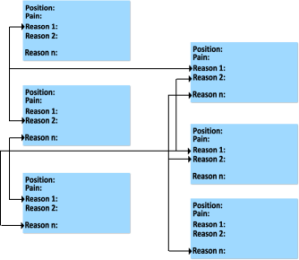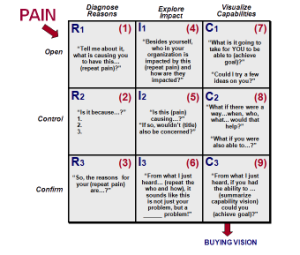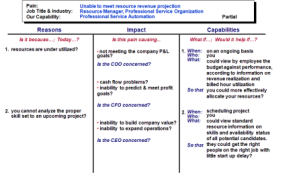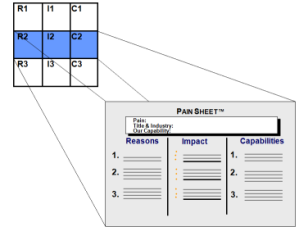Introduction
If you look back at the history of Business Process Management the idea that work can be viewed as a process, and then improved, is not new. It dates at least to Frederick Taylor in the early 1900s and probably before.The first major breakthrough in process management was statistical process control, by Shewart, Deming, Juran and others. This involved measuring continuous improvement, and the empowerment of workers to improve their own processes. It was driven initially by Japanese companies who had the motivation to apply the discipline required to put continuous improvement programmes in place. Other companies, after seeing the advantages gained by the Japanese companies, started to adopting continuous improvement and ‘total quality management’ programmemes based on statistical principles, however it required a considerable amount of discipline than most cannot sustain.
The next major variation on Business Process Management was driven by the economic recession in the early 1900s and strong competition from global competitors, particularly Japanese companies. This was named Business Process Reengineering (BPR) with a new approach to Business Process Management:
- the radical redesign and improvement of work
- attacking broad, cross-functional business processes
- ‘stretch’ goals of order-of-magnitude improvement
- use of information technology as an enabler of new ways of working.
The most recent process management evolution is ‘Six Sigma’, an approach created at Motorola in the 1980s and popularized by General Electric in the 1990s. ‘Six Sigma’ is usually focused on relatively small work processes, and presumes incremental rather than radical improvement. Some organisations are combining ‘Six Sigma ‘with the ‘lean’ techniques derived from the Toyota Production System.
Since the evolution of Six Sigma and the lean practice derivatives there is a great awareness of performance measurements and how processes and process owners impact the performance of an organisation. Technology and Procedures have been developed to support this awareness and the assignment of responsibility for managing the performance metrics. This Introduction by Kaplan and Norton through of the Balance Scorecard which is strategy focuses:
- Translating strategy into operation terms
- Aligning the organisation to the strategy
- Making strategy every ones daily job
- Making strategy a continuous process
- And mobilising change through executive leadership
- All Business Models start with a Value Proposition
- A Profit Formula to establish to support the Value Proposition i.e. a cost structure to support technological changes and the new demand for the product.
- A Set of Resources are defined to deliver the products or service aligned to the Profit Formula i.e. People, Products, Technology, Buildings, and Equipment etc. working inside of the profit formula framework.
- And finally Processes are defined and developed the within this framework to get things done.
A “Disruptive Business Model” is one where technology, cost structures, product volumes or services cannot be influenced by Business Process Improvements and demand a complete re-engineering of the Business Model. The approach highlights the importance of understanding the impact of external change within the life time of an organisation and when to choose re-engineering over continuous improvements. Technological innovation are not the only factors into today’s dynamic markets that affects radical change; also the economic cycles and the depth of recession can have the same destructive impact.
This way of looking at an organisation is important as it defines when to create a new organisation to support the business model and when to continue with Business Process Improvement.Positioning Business Processes within an Enterprise Architecture
Viewing Business Processes within an Architecture Framework ensures the integrity of the business systems and defining the relationship between Process, Technology and meeting Business Requirements.
Definition of Enterprise architecture: a coherent whole of principles, methods, and models that are used in the design and realisation of an enterprise’s organisational structure, business processes, information systems, and infrastructure.
Enterprise architecture captures the essentials of the business, Information Technology and its evolution. The idea is that the essentials are much more stable than the specific solutions that are found for the problems currently at hand. Architecture is therefore helpful in guarding the essentials of the business, while still allowing for maximal flexibility and adaptability. Any organisation can benefit from having a clear understanding of its structure, products, operations, technology, and the network of relations tying these together and connecting the organisation to its surroundings. Furthermore, there are external pressures to take into account, both from customers, suppliers, and other business partners, and from regulatory bodies.There are a number of Enterprise Architectures and frameworks that have been developed for specific industries and organisations.
Enterprise Architecture
- Conceptual Foundation for Architecture: The IEEE Standard 1471-2000
- The Zachman Framework
- The Open Group Architecture Framework (TOGAF)
- OMG’s Architecture Driven Architecture
- DoDAF/C4ISR : developed for the US Department of Defence
- RM-ODP: The Reference Model for Open Distributed Processing
- GERAM: The Generic Enterprise Reference Architecture and Methodology
- Nolan Norton Framework
Business Process Frameworks
In addition to the Architecture Reference Models there are a number of Business Process Frameworks and languages:- eTOM (enhanced Telecom Operations Map) the most widely adopted standard of telecom business and functional processes
- SCOR (supply chain reference model) is the global standard model for supply chain management and the world’s most widely accepted framework for evaluating and comparing supply chain activities and their performance
- Balanced Score Card the balanced scorecard is a strategic planning and management system that is used extensively in business and industry, government, and nonprofit organisations worldwide to align business activities to the vision and strategy of the organisation, improve internal and external communications, and monitor organisation performance against strategic goals.
- IDEF is the name of a family of languages used to perform enterprise modeling and analysis
- BPMN The Business Process Modeling Notation is one of the standards being developed by the Business Process Management Initiative (BPMI)
- ARIS (‘Architecture of Integrated Information Systems’, Scheer 1994) is a well-known approach to enterprise modeling. Although ARIS started as the academic research of Prof. A.W. Scheer, it has an explicit industrial background.
- UML (Booch et al. 1999) The Unified Modeling Language is currently the most important industry-standard language for specifying, visualising, constructing, and documenting the artifacts of software systems.
- SOA Service Oriented Architecture represents a set of design principles that enable units of functionality to be provided and consumed as services. The service concept applies equally well to the business as it does to software applications. Services provide the ‘units of business’ that represent value propositions within a value chain or within business processes. This essentially simple concept can and should be used not just in software engineering, but also at all other levels of the enterprise architecture, to achieve ultimate flexibility in business and IT design.
Architecture Languages
Delivering a Business Process Management Project
Stage 1 – Case for Change
The purpose of stage 1 is to bring the leader(s) of a client organisation to the realisation that some kind of significant change is required. The high-level activities conducted at this early stage centre around the senior management, and may entail joint efforts involving external consultants.The main output from this Stage is the Case for Change, which outlines the necessity for “doing business differently”, by confronting the senior executive with a compelling “snapshot” of the business dilemmas and emerging threats to survival and prosperity, currently facing the company. The awakening process is aimed at creating a climate of urgency and, with that, the impetus for change to occur. It provides the motivation and expected results from engaging in the project.
Stage 2 - Envision
The purpose of the Envision phase is to develop a common context and understanding of the organisation, its current challenges and its future direction. As rudimentary it may seem, unaligned perceptions and perspectives of senior managers and consultants will delay or derail the programme. This stage enables the organisation to initiate the BPI efforts so that all project activities strive toward consistent objectives.The initial meetings serve to validate the expectations regarding the timing and scope of the overall project. These discussions serve to initiate and structure the Business Process Management (BPM) programme, and may involve reviewing and revamping proposed project work plans. The resulting Mobilisation Plan outlines in broad terms the anticipated approach, timeframe and deliverables for all phases, while detailing the activities to be undertaken during the early phases of the project. The plan ensures that all important steps that need to occur are being addressed, it develops ownership of the programme by the project team and stakeholders ensure that they understand his or her role in it. The Mobilisation Plan will focus on project events as well as on the activities required to appropriately mobilize the organisation for the programme ahead.
Building a common understanding of the organisation’s current situation—both its internal operations and its position within the marketplace—is essential to set the proper context for the BPM programmeme and to gather and accurately interpret pertinent information received from the client g the programme activities. The complete portrait of the organisation’s situation is defined through the combined development of the Internal Organisational Overview, Business Position and Holistic Business Model.
The Envision phase ends when multiple levels of the organisation have an image of where the organisation wants to be and can consistently and uniformly articulate where the organisation is going. At this point, both the client and consultant share a common understanding of the organisation’s structure and operations, the external context in which it operates and what the organisation wishes to become.
Holistic Business Model
We often view our business from an internal perspective and do not consider how external organisations see us as a business. It is important if we need to attract investors, appease the regulatory bodies and convince internal stakeholders, to describe our business in a manner that provides a risk assessment on none performance and the steps management will take to corrective the situation.A standardised Entity-Level Business Model is established as the starting point for business modeling. It is a high-level profile of the business entity and the environment in which it operates. The purpose of gathering information about the business at the entity level is to identify sources of business risk, the entity’s position in the industry and the key business processes.
- External Business Drivers and Stakeholders - External Business Drivers and Stakeholders are those outside factors, pressures etc. that can prevent an entity from attaining its objectives.
- Markets - are the segments of an industry that are applicable to the entity.
- Business Processes – are a structured set of activities within an entity, designed to produce a specified output. A business process emphasises how work is performed rather than what is done. It is also structuring of work activities across time and place to transform inputs, such as information, materials and resources, to outputs, such as the products or services for customers or other users. Processes are usually linked with the outputs of one process being the inputs of another process. These are divided into:
- Strategic Management Processes
- Functional Management Processes
- Core Business Processes
- Alliances / Relationships with Suppliers - Alliances are the types of relationships with third parties that entities in the industry may establish to:
- attain business objectives,
- expand business opportunities
- Reduce or transfer business risk.
- Products and Services - are the significant products and services typically offered by entities within the industry.
- Customers - are the significant types of consumers within the markets in the industry that entities may choose to focus on.
- Purpose of the process
- Diagram of the process in terms of inputs, outputs, activities and information systems
- Business objectives
- Critical success factors
- Key performance indicators
- Business risks
- Responses to business risks
- Internal control
- Classes of transaction
The purpose of the Value Chain is to assists management in visualising the core processes in the organisation that create value for customers and their interrelationships with other support processes.
Stage 3 - Focus
The purpose of the Focus phase is to identify the major opportunities for performance improvement that are associated with existing processes, technology and human resources. This identification comes not only from appropriate analysis of the existing environment, but also from a full understanding of the direction that the company is taking and the external environment (political, economic, social, etc.) in which it competes. The communication of these opportunities to the client serves to sensitise management to the scope/degree of changes being considered and allows for the prioritization of the design activities that are to follow in subsequent phases.Organisational vision statements are ineffective if they are not supported by tangible actions that are required to realize that vision. The articulation of Critical Success Factors calls for the identification of customers (and stakeholders), their expectations concerning what constitutes “quality” service, as well as the ways that the organisation must excel to meet these expectations. Key Performance Indicators and Stretch Targets together provide the quantifiable parameters required for gauging project success.
It is imperative that information such as the Confirmed Business Vision, Critical Success Factors, and Shared Values and Guiding Principles be clearly articulated across the company through the development and execution of a Communication Plan. Once the business direction of the company has been firmly established, Focus Areas can be identified. These represent the broad areas of the company where performance improvement efforts should be concentrated. Upon the selection of Focus Areas, the identification of opportunities for performance improvement is facilitated by the analysis of the current environment resulting from the “As-Is” Process Assessment, As-Is Technology Assessment, and “As-Is” Human Resource Assessment.
The “As-Is” Process Assessment highlights, from beginning to end, the chain of activities required to respond to customer requests and the current level of performance that is obtained. The mapping of existing processes reveals to employees how their day-to-day work duties interrelate with activities of colleagues to produce a product or service—as well as which tasks do or do not add value. The “As-Is” Technology Assessment documents the current network, application and data architecture in place to support the organisation, along with the skills of the management and staff of the information technology (IT) function. Similarly, the “As-Is” Human Resource Assessment identifies the current level of support provided to personnel in areas such as internal communications, training and development, rewards and recognition.
Spending too long analysing the “As-Is” can lead to a loss of momentum and cause the project to stall. This methodology has adopted a “just-enough, just-in-time” attitude towards the logic and level of detail “As-Is” analysis.
The attainment of “breakthrough” performance improvement is founded on the notion that all existing elements of an organisation—people, process, technology, policies, etc.—must be opened up to challenge. This is why, taken together, the assessment of processes, technology and human resource issues establishes a comprehensive performance baseline that can point to Priority Opportunities.
In addition to the Priority Opportunities that are identified, a list of potential Quick Wins (easy-to-implement opportunities) is built up throughout the early phases of the BPI programme. It is important that any feasible solutions are put in place swiftly, so as to generate and maintain the momentum for the large-scale changes that are to come.
Stage 4 - Design High level
The objective of this phase is to develop a portrait of how the client organisation will conduct business in the future. Design teams are chartered to support the core team in creating this portrait. It includes a description of and Business Case for the new or redesigned work processes, as well as an overview of technology and human resource changes that the eventual implementation of the recommended “To-Be” processes will require.The project team uses the “To-Be” Process Model to map what it considers the most innovative and streamlined work process that will achieve or surpass improvement targets while respecting any constraints stipulated in management’s design principles. The “To-Be” Technology Architecture and “To-Be” Human Resource Model then describe how the information technology, organisational structure and employee skill requirements must be realigned to support the redesigned business processes.
By the end of the Design High Level phase, a complete business solution will have been designed, and a Business Case and the Migration Plan will have been agreed upon “in-principle” by senior management, and understood by all affected managers and staff.
Stage 5 - Design Details
The objective of this phase is to design the details and understand the consequences to the organisation of implementing the preferred “To-Be” business solution. Detailed Process Descriptions are developed to explore precisely how the new work processes will function. In most cases, this activity involves a systematic analysis to identify the detailed information requirements of “To-Be” process flows. When package software has been selected to enable the process or business, these descriptions are created with a prototype of the software so that processes can optimize the functionality of the selected package. In those cases where custom development occurs, logical decision rules governing the information requirements are established from this deliverable, that ultimately are translated into the underlying programmeming code that is developed.Once Detailed Process Descriptions have been defined, an Organisation Structure is described that outlines how the company’s workforce can best be organized to perform these new processes. Internal constraints, such as clauses in collective agreements, shortages of required skills, “turf” battles for control of territory, etc. often dictate a number of different scenarios to be explored. Senior management must then choose a preferred model based on the strengths and weaknesses of each option.
Completion of a Competency Needs Assessment identifies the shortfall between current employee skills and the competencies required to function effectively in the “To-Be” state. While this assessment can vary significantly in size, a comprehensive assessment will map out a personalised (re)training path for each employee, based on their individual needs. It will also point to ways that the organisation can optimize its investment in training by employing a combination of different delivery modes (e.g. computer-based training/support, on-the-job mentioning/partnering, classroom courseware, etc.).
The process redesign exercise will have identified a series of policy changes required to enable the adoption of the new process. In this context, “policies” refer to either external regulations or internal “house rules” that guide day-to-day employee decisions and behaviours in the workplace.
Upon completion of the Design Details phase, management will have given its unequivocal commitment (i.e. for sponsorship, dedicated resources and funding) to move forward with a set number of implementation sub-projects with a high level of certainty in cost and confidence in benefits.
Stage 6 - Build Phase
The purpose of this phase is to construct and test all outputs of key components of the business solution. Subproject teams work in parallel to build an infrastructure capable of supporting the “To-Be” processes. Information technology systems are validated against initial requirements both from a technical and a user perspective. All necessary support documentation is drafted or assembled in anticipation of the “go-live” implementation date. Modifications/upgrades are made to physical facilities, and organisational programmes are put in place to help deal with a broad range of employee-oriented issues.In virtually all BPI programmes, information technology (software, hardware, networks, etc.) is inevitably a critical component of the overall business solution. In this phase, the various aspects of the IT component are built from the conceptual designs that have previously been drafted. Custom Software Development is completed in those cases where software applications are created based on the functional requirements outlined in the Detailed Process Descriptions deliverable. When package or “off-the-shelf” software has been selected to support the execution of business processes, it is necessary to perform Package Software Modifications for adequate support to occur. In either situation, various forms of Information Technology Testing will take place to ensure that the system is suitable for roll-out across the organisation. This testing addresses both functional and technical aspects of the system.
Data Migration is an important part of this building process. It consists of identifying the data requirements of the new system and either manually keying-in data (from existing paper files) or developing conversion programmes capable of uploading legacy-system data into the new computer system. The results of this deliverable are critical for all IT deliverables in this phase and for the Business Solution Roll-out deliverable in the next phase. Depending on urgency and necessity, data-conversion activities are often spread across months or even years.
During the building process, Implementation Pilots are executed to enable the company to assess—within a controlled environment—the look, feel and practicability of the processes, organisational changes and software/hardware being utilized. Pilot projects are commonly done, because they provide an opportunity to identify and remove as many problems as possible prior to implementation to the full organisation.
New/Revised Policies outline the new rules for staff, and also explain “why” the policy is being rewritten, as well as how their daily work routine will change as a result. Position/Competency Profiles outline key job responsibilities, and allocated time percentages are drafted in accordance with company practices. (Job description formats are often stipulated within provisions of collective agreements.)
By the end of the Build phase, the organisation will have been shown a compelling demonstration of a working prototype of the business solution and will be able to confidently confirm the attainable benefits. Senior management will have declared “We are ready to go live”.
Stage 7 - Implementation
The objective of the Implement phase is to set in motion across the company the full suite of process, technological and social changes that have been designed and built. Implementation begins when the targets of change begin experiencing the impacts and are expected to adopt the new state. There are a wide range of activities being completed by implementation teams in this phase such as equipment installation, employee training, issue documentation/resolution, and managing compliance to new processes and policies.Managing the Business Solution Roll-out throughout the entire organisation is one of the most challenging aspects of the BPI programme. Abnormally high levels of support are likely during the initial operation of the business solution that needs to be directed and coordinated. New issues to be addressed for the implementation to proceed smoothly will continuously arise.
During the course of the implementation it is not only important to measure the resulting improvement in organisational performance but to also measure the progress of the implementation itself. This measurement is conducted as part of “programme management” using the Implementation Plans and Performance Feedback mechanisms.
Upon completion of this phase, the planned business solutions will be operational across the organisation and employees will have been fully trained. Staff will be configured under the revamped organisational structure and will respect the revised policies that govern their work duties. The employees will see and feel the benefits and senior management will declare that the expected results from the BPI programme have indeed been achieved.
Stage 8 – Continuous Improvement
The goal of the Enhance phase is to put in place mechanisms to ensure that performance improvements resulting from the BPI programme are sustained over time and ultimately lead to opportunities for additional performance gains. By training small teams responsible for identifying and initiating ongoing improvements, the company will initiate an effort to make continuous performance improvement an integral part of the organisational culture.A Continuous Improvement Programme is established, which outlines the manner in which future performance enhancements will be supported in the organisation. In addition, the plan identifies the steps that are needed to allow the employees not only to identify opportunities for improvement, but also to become empowered to act upon them.










